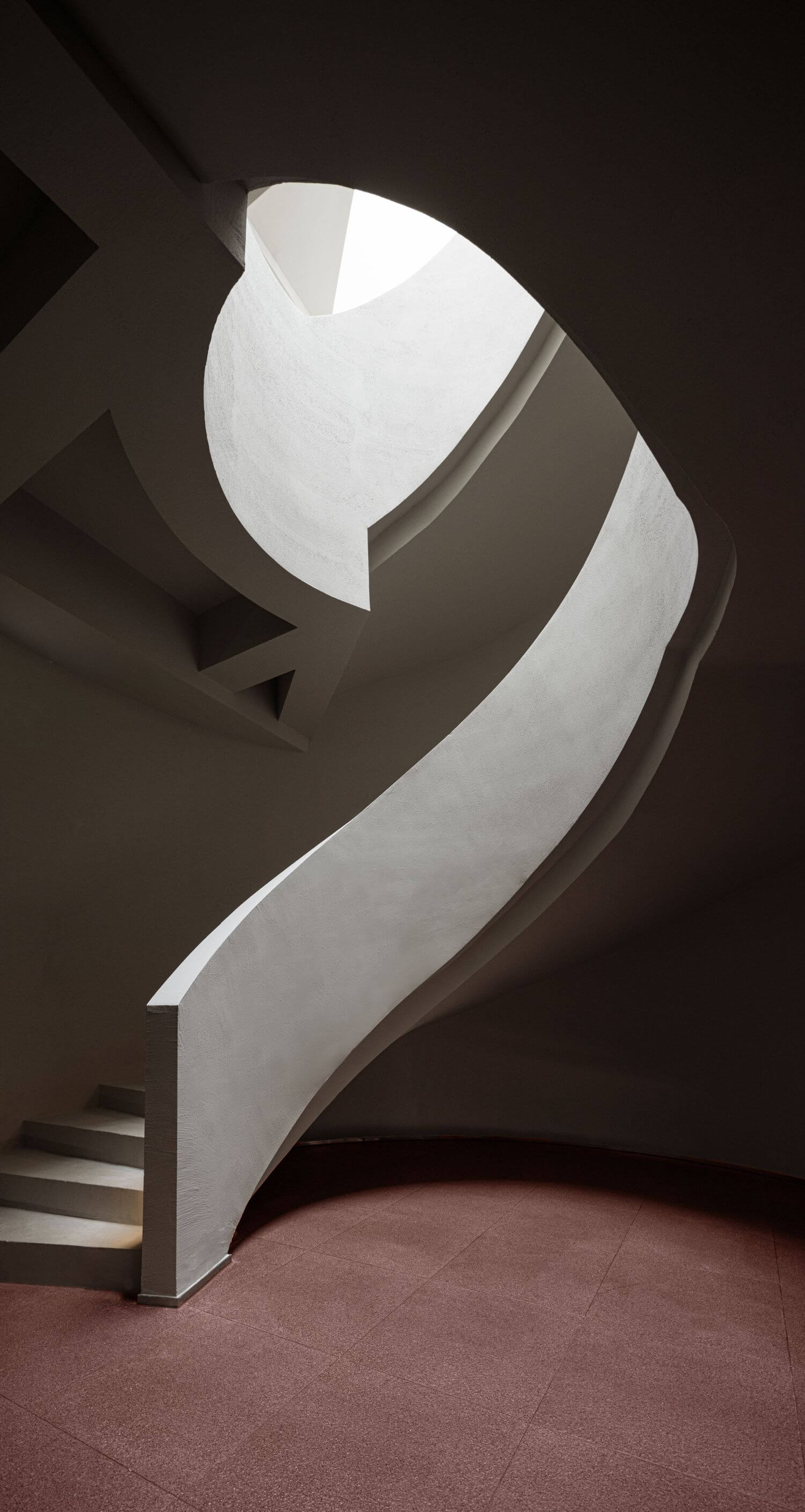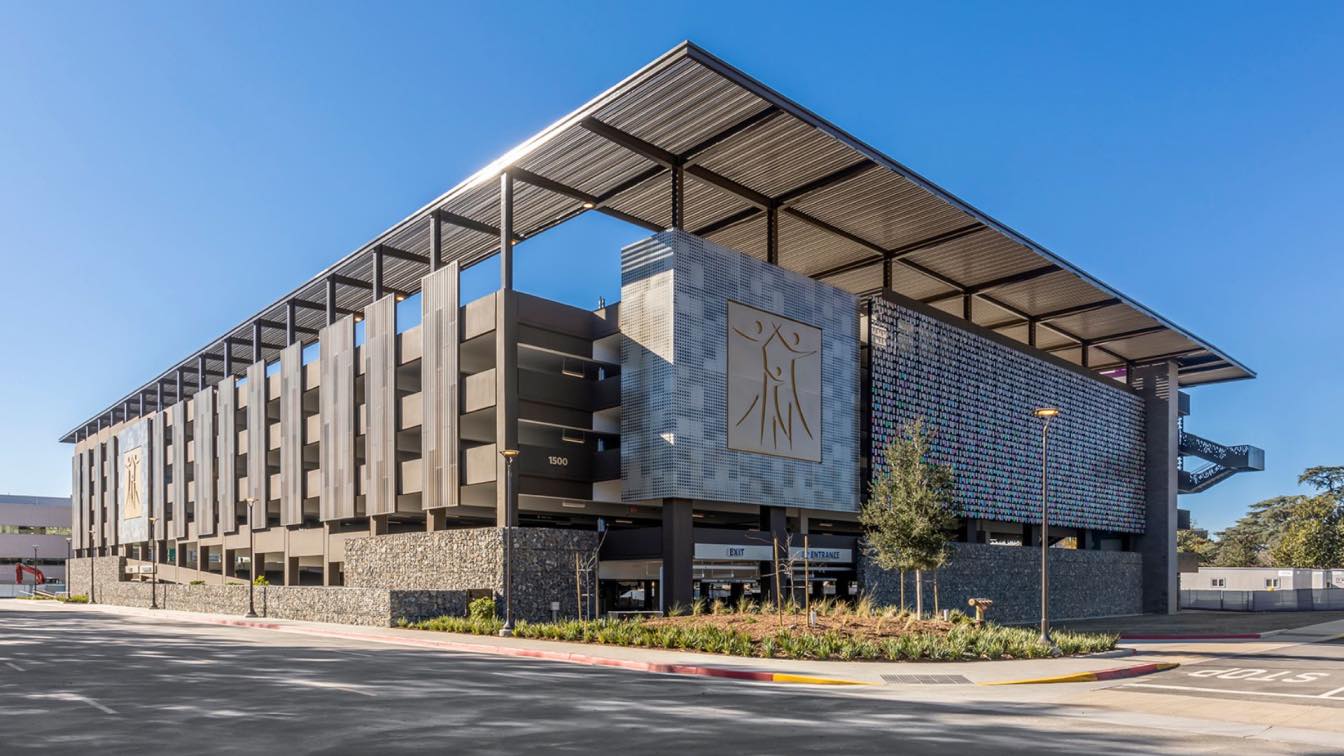“Demolishing is a decision of easiness and short term,”said Anne Lacaton. “It is a waste of many things – a waste of energy, a waste of material, and a waste of history.”
The sense of life in architecture lies in the duration of time, which is closely related to the usage scenario. However, buildings also have their own life cycle, whether it is the decline of the building's own functions, changes in social demands or new requirements by local policies, all of which become opportunities for old buildings to be rejuvenated.
Renovation: Changes in Architectural and Spatial Functions
Li City Study is located in the Tianmu Lake Resort in Liyang City. As a government-sponsored public welfare project, it realizes the convenience of shared urban cultural spaces and provides a public space for citizens and tourists to read books for free 24 hours a day. Before the renovation, the building was an office. The government proposed new social functions for it to adapt to public needs while reflecting the humanistic care for the public.
During the renovation process, Greater Dog Architects conducted in-depth research on the existing building, rooted in the building's past, and responded to the new functions. Respecting the site environment, construction methods, and the original frame structure of the building, the architects followed the principles of sustainability to the greatest extent, utilizing the existing space, creating a cultural and memory space container, and a shared reading and public communication venue within a limited innovation framework.
Reuse: Retention and Reuse of Architectural Framework
The building has three above-ground floors and one underground floor with a frame structure. The semi-outdoor entrance that is set back from the building and the deliberately extended circular traffic flow separate the building from noisy street. At the same time, the architects removed the exterior walls, exposing the original beams and columns frame. They cut the original floor slabs and added new setback circular structural beams on the main facade. It brings changes to the new structure and interior floor slabs while further highlighting the modern language of the existing framework system. Through the dialogue between the old and new structural language, a well-balanced appearance is presented for existing building.

Sustainability: Introducing Natural Light into the Building
Greater Dog Architects' design team also reorganized the form of window openings. The frameless inner curved glass contrasts with the heavy frame structure, highlighting the clear architectural contours. More viewing angles toward the outdoors are added around the curved wall, connecting with the external nature: the transparency of the inner curved floor-to-ceiling glass and the scenery of Tianmu Lake outside create an interesting interplay, establishing a dialogue between the lake and the building.
The outward-curving arc shape on the facade continues the form language of the inner curved beams, establishing a new exterior facade combination while creating diverse reading scenarios indoors. Based on this shape, the window system becomes more private, and the slender skylight at the top of the outward-curving arc offers another way to connect windows with nature: looking up at the sky, feeling the poetic movement of light and clouds.
By reorganizing the traffic circulation throughout the building and using spiral staircases in the cylindrical space, the main spaces on each floor are connected. The circular skylight introduces natural light and further increases the connection between the interior and exterior of the stairwell. In the building renovation strategy, natural light is maximized, creating multiple connections between the originally closed "box" and the external environment, realizing the sustainability of the building and its surroundings.
The clear outline of the cylinder is revealed on the facade, interspersed within the original beams and columns frame system. The gray wooden tiles are re-dyed and pressed from recycled wood, which adds natural texture to the building and bringing new memories and warmth. The exposed beam and column structure is wrapped in reddish-brown exterior paint, and the same color reflected by the glass blurs the outline of the interior, further highlighting the natural texture of the wooden shingles.

Renewal: Extending the Use of the Building with New Functions
The simple interior highlights the display and arrangement of books, creating a poetic and quiet reading space through the shaping of the sloping roof form. At the same time, the intervention of the sloping roof structure breaks the enclosed nature of the original floor slabs, opening up the spatial relationship between the upper and lower floors as much as possible, and integrating multiple functions: the sloping roof form combines the first-floor coffee counter function with the book display needs on the first and second floors. The same design is continued in the bookshelf, with the scale reduced and cantilevered above the shelves, concealing the display of lighting. A staircase corner forms a clustered reading area, where the handmade texture of glazed ceramic bricks and the rough texture of reddish-brown floor bricks create a harmonious material context with the facade of the building.
In addition to the redesign of facade, circulation, and interior functions, the building has also been updated functionally, and technical challenges encountered during the process have been substantively resolved: the design team made the maximum possible adjustments to the building's load-bearing capacity to achieve new loads within the space; a comprehensive HVAC system renovation was carried out for this building from the early 1990s, along with the redesign of fire escape, lighting application systems, etc… the original structure that did not meet the requirements for seismic capacity and structural measures was recalculated and reinforced, enabling the building to enter a new life cycle. Although the renovated building is different from the surrounding buildings in the Tianmu Lake scenic area , but the architect always insist on a "proper" sense of proportion, so that a reasonable scale between the existing framework and the new massing.
The renovated Li City Study is seamlessly integrated into the city and its surroundings with a new texture, bringing more vitality to public cultural needs. In the context of urban development shifting from incremental expansion to stock upgrading in China, the reuse of existing buildings achieves their sustainability. And the reasonable "treatment" of the shortcomings of existing building to extend the service life of the building. This approach to architecture is based on the recognition of the present, rooted in the past, and at the same time, responding to the present. Its reuse not only becomes a new public architectural landmark for the scenic area but also brings more memories to the building, reflecting the importance of architecture as a long-lasting presence.














































About
Founded by Red Hu and Jin Xin in 2015, and based in Shanghai & London. Greater Dog Architects is an avant-garde design studio whose practice spans the fields of Architecture、Landscape Design、Interior Design、Installation Art、Performance Architecture Research. Rooted in experimental and humanity spirit, we write architecture and space design in a way of story-telling. Meanwhile, by employing performance and installation as the media, we are trying to mix the boundary between commercial design and art language as well as build up dialogue between people and space.
Greater Dog Architects have been completed large architecture and planning projects in china: BRLOOTE Headquarters、 BAISIHAN P&D Research Centre、 Tianmu Museum、LI City Study, etc. And also completed more Hotel design projects, Retail design and office design projects: LITIAN hotel (four star)、Progenius Park、Music House Bar、Architectural Digest Stage Design、 WE COUTURE Bespoke、LEDING Bespoke、V SPOT sex toy shop、CCIG Office Design、US Yimei - Shanghai Office Design, etc.
Meanwhile,Greater Dog and Shanghai Fashion week have reached a long-term cooperation and completed show space designs and performances for London fashion brand - EDI. Z and HEMU, in recent years; Greater Dog invited by the 100th anniversary of Bauhaus in Dessau and did a series of performances in Germany; Experimental design work 「No Parking」 were exhibited in The Bartlett School of architecture,UCL; and also be invited to run academic workshops and professional lectures in China Academy of arts、New York University Shanghai 、Shanghai Institute of Visual Arts、Westbund Gallery and Huamao Museum of Art Education, etc.





